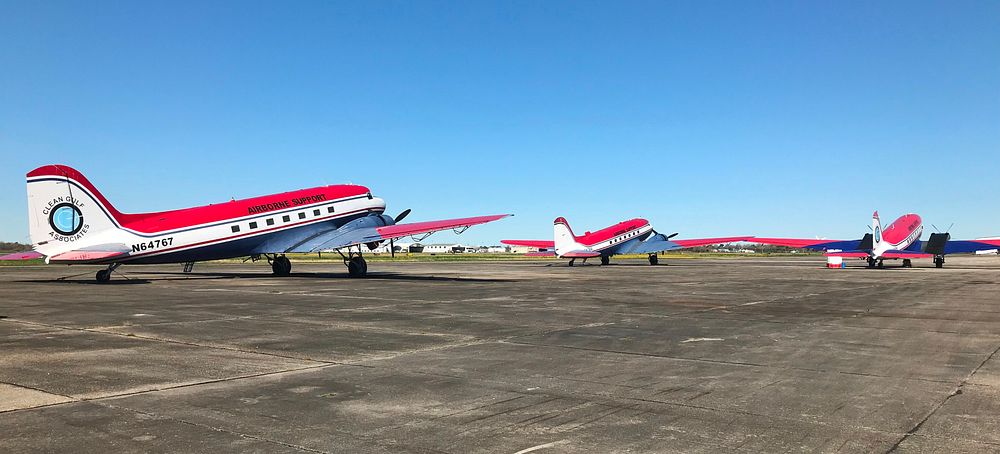https://www.usa.gov/copyrighted-government-workshttps://www.rawpixel.com/image/9653768

Dispersant Aircraft
February 13, 2019
Presquille, LA
Dispersant application and monitoring aircraft stand ready at an airfield. The fleet of aircraft are deployed by an oil spill removal organization (OSRO) to apply dispersants to an oil spill when directed. The aircraft have different functions - some spray the dispersants while others serve as spotters to monitor the effectiveness of the application. The use of dispersants is a response tactic that helps to mitigate the impact of a spill. When dispersants are applied to a slick, they break up the oil into lots of small droplets. These tiny droplets have a high surface area-to-volume ratio, making them easier for oil-eating microbes to break them down (through the process of biodegradation). Dispersant application strategies are listed in the Oil Spill Response Plans maintained by offshore facility owners and operators. BSEE Preparedness Analysts from the Oil Spill Preparedness Division (OSPD) regularly inspect these plans and dispersant stockpiles and application equipment to ensure compliance with regulations and to monitor the overall vigor of the oil spill preparedness and response community.
Photo by: BSEE
Original public domain image from Flickr
Public DomainFree CCO U.S. Government image for Personal and Business use